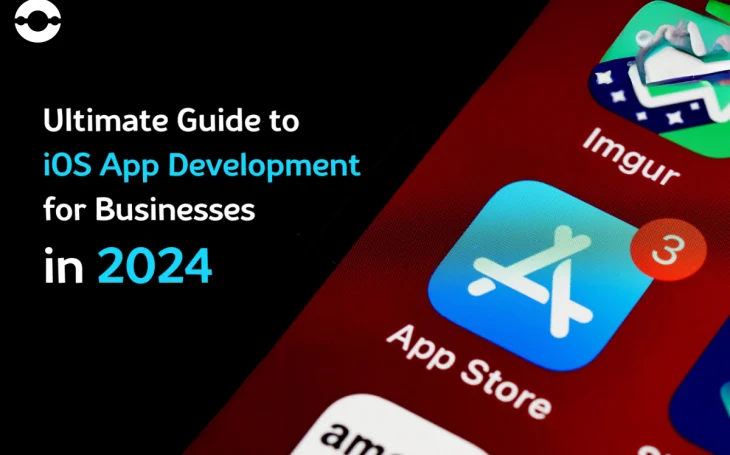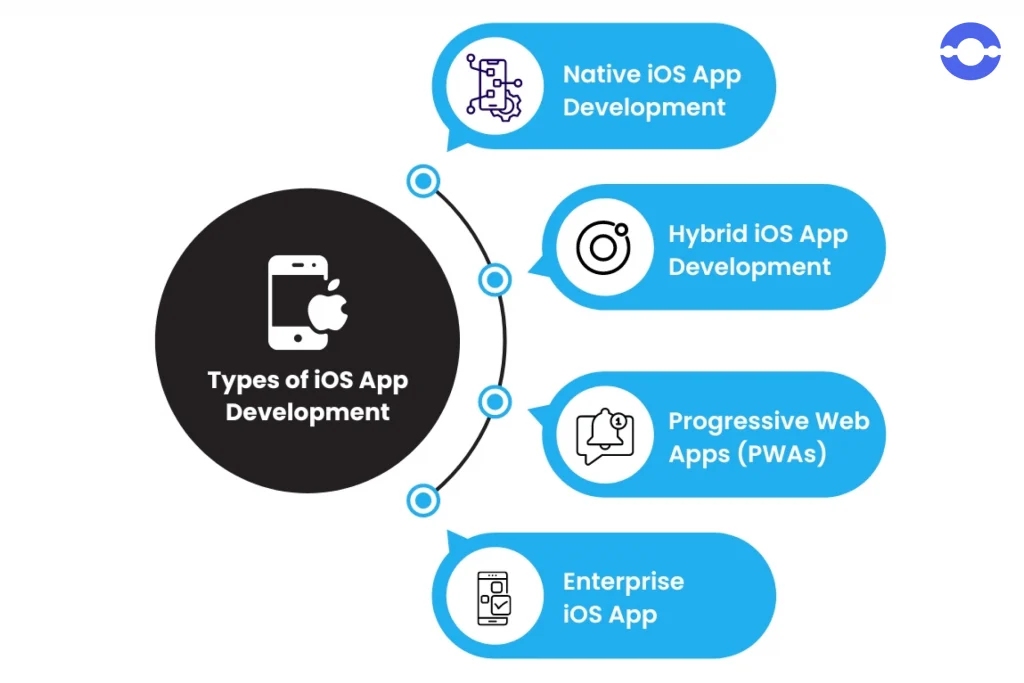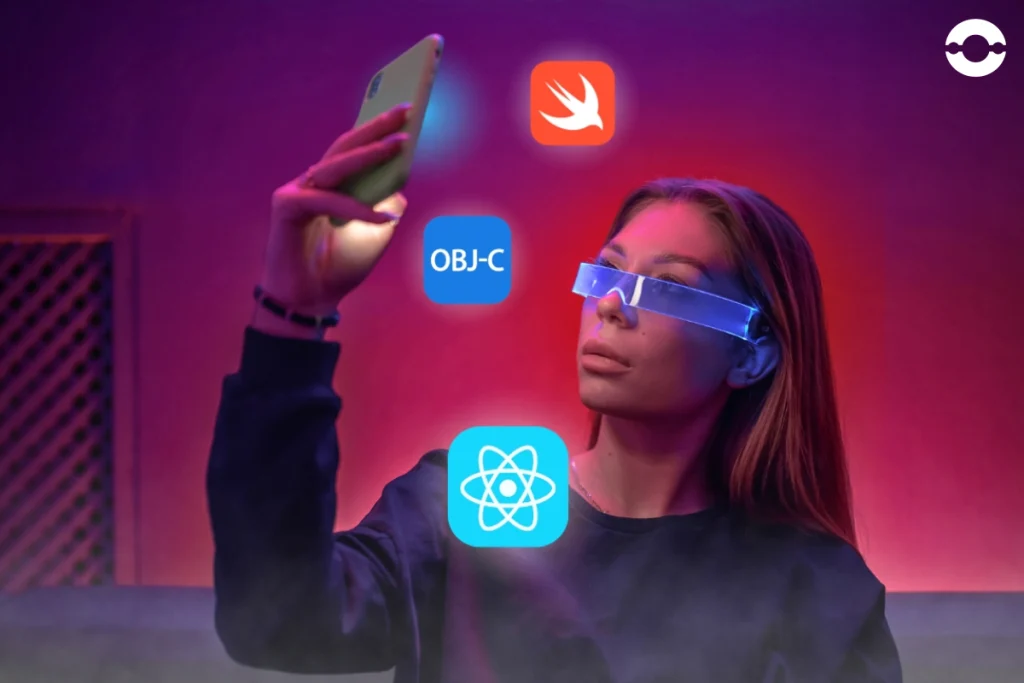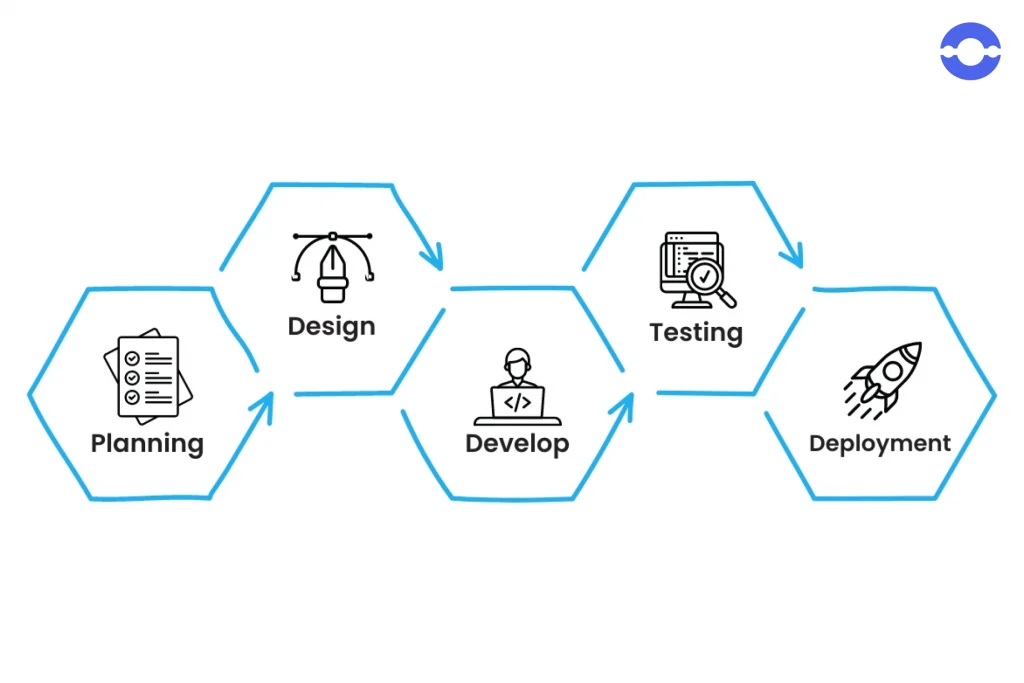
Imagine having the ability to connect with millions of users who are actively engaged, all through a beautifully designed and easy-to-use app on their iPhones, iPads, and other Apple gadgets. This dream can become a reality with iOS app development.
Whether you are a startup, enterprise, or SME, this ultimate guide is for you to unveil the secrets of crafting an outstanding iOS app that will skyrocket your business to success in 2024 and beyond.
But, before we delve deep into this guide, let’s answer the fundamental question.
What Does iOS App Development Mean?
iOS application development is the area of creating computer applications for Apple gadgets like iPhones, iPads, and iPods.
Through the help of languages like Swift, Objective-C, Xcode, and UI Kit, developers create apps whose OS is tailored for iOS.
Businesses build iOS software development platforms to have access to iOS Apple users and give them opportunities to access services and products.
The greater the number of users of iPhones and iPads, the more profitable the iOS app development will be to those businesses that can seize this market and thereby boost their growth.
Ultimately, iOS application development provides the developer community an opportunity to create functional apps, that are user-friendly and allow them to reach their target audience too.
Why Choose iOS For Mobile App Development?
In 2024, the iOS platform remains a top choice for businesses venturing into mobile app development, and for good reason. Here’s why:

1. Market Reach and Revenue Potential
Android has more users around the world, whereas iOS has more spending customers when it comes to app purchases.
However, the App Store generated 85.1 billion dollars in 2023 according to a recent survey. This opens the potential for app businesses to generate earnings with their application.
2. Premium User Experience
To maintain a high standard, it is very demanding to carefully review the quality of all the apps that are submitted to the App Store by Apple.
This pledge by Apple’s standards for iOS apps brings out an amazing user experience, to the point that iOS users can trust and, in the end, become loyal to better-designed and more functional apps.
3. Strong Brand Loyalty
Apple fans have a reputation for their loyalty to their brand, as well as spending pretty much all their resources on premium products and services.
iOS users are known for their dedication and trust in the Apple brand, so targeting this group allows brands to take advantage of the high recognition and reliability reputation of Apple and these traits reflect well on their brand image.
4. Enhanced Security and Privacy
The processing brand of iOS (Apple operating system) is widely recognized for its powerful security components as well as its strict confidentiality precautions.
The increasing issue of data privacy and security breaches has prompted more users to navigate the digital environment more carefully.
To earn the trust of their users, businesses should consider developing apps on a platform that is known for its security and data privacy compliance.
5. Seamless integration with Apple platforms.
For businesses already embedded and congruent with the Apple infrastructure, making apps for iOS results in a synchronized manipulation of Apple devices and services.
The interconnected user experience empowers businesses to use Apple’s highly useful facilities, such as Apple Pay, Siri, and iCloud and enables them to integrate these functionalities into their apps.
Also Read: Common IOS App Development Challenges
Types Of iOS App Development
For iOS app development in a business process, the businesses have three different options based on their goals and functionality.
Here are the primary types of iOS app development: –

1. Native iOS App Development:
As Native applications are written in native programming languages like Swift or Objective-C, they only work with iOS and there are no modifications that are required to be made.
This enables them to partake in Apple APIs/frameworks use, making performance optimal, adjusting to device-specific functionalities, and fostering complete integration.
2. Hybrid iOS App Development:
Hybrid iOS apps are developed by means of web technologies such as HTML, CSS, and JavaScript; however, embedded in a native container which allows iOS to call its system functions and load native views.
The stage areas like Ionic, React Native, and Xamarin allow for the developers to create cross-platform applications that run on the iOS and Android devices, leverage the code reusability, and the shorter development cycles.
3. Progressive Web Apps (PWAs):
PWAs are web apps that function similarly to mobile apps and can interact with operating system APIs providing access to device features.
As PWAs are not originally associated with the iOS platform, they can be accessed through Safari browser, which supports features such as offline access, push notifications, and home screen installation, hence, reducing the gap between web and native apps.
4. Enterprise iOS App Development:
Enterprise iOS apps can be used to meet the business and the organization’s needs, by means of focusing on their internal things, employee productivity performance, and customer relationship.
Most of them integrate with business systems, databases, and security networks to smoothly operate the workflows and increase productivity in the organization.
Best iOS App Development Languages
The selection of a programming language is your first and most important step when developing an app for iOS. Here is my brief look at the languages used most frequently:

Swift
Together with the clean syntax and useful features Swift is a great option for iOS app development with Apple these days.
Developers can create highly reliable and performant applications that will run on Apple’s iPhone (and Watch) devices very easily.
Swift is updated on an ongoing basis because of the effort of the open community of developers who ensure it never becomes dated or obsolete.
Objective-C
Yes, objective-c was replaced by Swift, but Objective-C remained a valid option – at least for legacy codebases.
Objective-C is a superset of c, meaning you can run c code in objective-C, and adds object-oriented features as well as dynamic execution, making it a good way to call into older frameworks and libraries, which meant that it was still useful for people sharing code in the Apple development ecosystem.
JavaScript (React Native)
For cross-platform compatibility and leveraging web development skills, React Native provides an alternative approach to iOS app development. It allows developers to write a single code and deploy It on iOS, Android, and web platforms.
React Native While not as tightly integrated with Apple’s ecosystem as Swift offers a viable option for developing performant iOS apps making it suitable for certain development scenarios.
Tools To Create High-Quality iOS Apps:
Let’s take a deeper look at the top tools for iOS app development.
1. App Code
App Code is a strong integrated development environment (IDE) developed intending to address all the development needs of anyone
who is building services, applications, and games with macOS and iOS as platforms.
Its intelligent code assistant, refactoring, and code generator have a significant role in shifting the whole process of coding and automatic code production. All these are aimed at the enhancement of productivity.
2. Alcatraz
Alcatraz can best be described as a package manager for Xcode which helps to automate loading the new and straightening the preinstalled plugins, along with it the ability to create a custom upgrading list for automated processing.
This, in turn, extends Xcode’s ability by giving space to many external tools and software that can be used by developers for their programs.
3. Cocoa Pods
Cocoa Pods is a dependency managing module for Swift and Objective-C projects with the help of which developers can easily employ the most profound technologies to build high-end iOS apps.
It reduces the load on developers when managing vulnerabilities and dependencies and therefore also ensures compatibility across projects.
4. Mockingbirds
Meanwhile, Mockingbirds will be easy-to-use software that lets designers, developers, and test users create interactive mockups and wireframes for iOS apps.
Prototyping helps the team members elicit countless feedback from the consumers and improve their design in a few days, unlike the traditional way which involves a long testing time.
Thing to be remembered before starting to develop iOS Applications:
Do market research
Before you begin, conduct thorough research on the app you intend to create. Analyze your competition and create plans based on it. Before you begin, you must have a thorough understanding of your app’s concept and features.
Make it unique
Not every app is suitable for the app store. Unlike the Play Store’s criteria for allowing apps, Apple has its own set of guidelines that must be fulfilled.
It makes it easier to discover and report on non-original apps. Thus, originality might be seen as critical for development.
Find your targeted audience
It is pointless to create an app if you don’t know who will download it or how it will help them. When developing an iOS app, creators must identify and assess their target audience.
Keep it user-friendly
One of the most crucial things to remember is that it’s an iOS app that must be visually stunning.
Before getting into shape, make sure that your UI/UX designers have real-time expertise. People love the app which is simple and engages them.
Testing all functionalities
Most problems and errors arise after an app is launched, which is why it is critical to test the app numerous times before launching it.
To avoid future app troubles, an iOS developer must test the app using various emulators and genuine devices.
How To build iOS Apps For Business?
Creating mobile apps for iPhones is one of the business benefits for the iOS platform.
App development business process will give you a number of essential steps which ensure that the product will be highly efficient and exactly designed for your audience’s needs.
Here’s a concise guide to the five essential stages: The five main areas that make up the step-by-step approach are:

1. Planning
- Set up your app division, target audience, and its goals.
- Perform a market analysis to determine the needs and predisposition characteristics of the users.
- Specify essential features as well as app functionalities needed for your iOS app.
- Develop a chronology and a budget which will serve as the foundation for the actualization process.
2. Design
- Create some wireframes and prototypes to detail the app’s general look and layout.
- Create user interface (UI) according to Apple’s Human Interface Guidelines standards of the interface which should be user-friendly and without a need to think through.
- Attended to the usability, accessibility and visual features that will affect the app’s success.
- Develop designs repeatedly after receiving feedback from partakers and usability testing.
3. Develop
- Select the appropriate instrument as well as the engineering tools and technologies, e.g., Xcode and Swift.
- Write clearly, elegantly, simple, Maintainability, and secure code following the best code writing practices.
- Implement the feature roadmap, by utilizing the necessary APIs and integrating with the back-end services.
- Establish your app’s performance and check the optimal setting, always ensuring compatibility with all devices currently available on the market or even running on the former versions of iOS.
4. Testing
- Start the testing process on every phase of development and then make bug fixes and improvements on usability and performance.
- Implement a system to check that each function and user experience are working as they should.
- Launch and test the app on the latest iOS models and different screen sizes to provide the best user experience for smooth performance.
- Derive testing tools and methods automated to minimize the time spent and improve performance.
5. Deployment
- Develop an app and supply it to the Apple App Store for marketing purposes, following Apple’s guidelines and mentioning their requirements.
- Make up irresistible app store stuff, such as screenshots, descriptions, and promotional materials.
- Test the app from start to end using Apple’s TestFlight platform where you can assess feedback and test your app.
- On the Apps Store, submit the app for approval, while keeping an eye on its stability and user reviews for the app to be improved.
Cost To Develop An iOS App
The main factor that is followed up by the development process – on a priority basis – is the cost of the Apple application that you have in mind to be created.
Smartly addressing the most vital areas will be the key pillars of your iOS app development budget.
Here are some factors to be considered: –
Size of the app
As the universal rule says, the bigger the size, the higher the price also applies to the development of the apps, the size refers to the number of features, pages, and screens in the app.
More screens mean more design and development resulting in higher costs.
The complexity of the app
Complex things take time to build, and the same goes for apps. Complex apps require more effort, time, and resources to build, resulting in greater development costs.
Simple apps, on the other hand, are simpler to create and adjust, resulting in lower costs.
Design cost
As excellent looks draw attention, so does app design, which is also an important factor that influences app development costs.
High-quality UI/UX contributes to a visually appealing program, making it pricier.
Native or cross-platform
Native iOS development gives access to numerous performance improvements and platform-specific features, but these require extra effort in the end.
Cross-platform tools, React Native and Flutter which make development simple, might compromise at the same time on issues.
Quality Testing
Good quality testing and assurance are needed for developing a bug-free, and user-friendly iOS application.
Although it may require extra expenses, broad testing will eventually pay off by saving your time and resources applied in the development stage thanks to the bold detection of challenging objects.
Also Read: Top iOS App Development Trends In 2024
Why Outsource iOS App Development?
Outsourcing iOS app development presents remarkable benefits to companies that want to act upon their app development processes with the services of professionals who are well-versed in the subject.
Here are some compelling reasons to consider outsourcing:
Access to Specialized Expertise
A partnership with a trustworthy iOS application development agency will enable the fact that you will have the access to a group of experts in software development, design and project management, who have the required qualifications to create a bright future for the app of your business.
Faster Time to Market
Being able to hire an iOS app development company to perform the creation process of the application will enable businesses to make the app to the market quicker.
Ann assignment a slowly related task team helps reduce time-consuming tasks and overall development lifecycle, and it empowers businesses to come and outcompete the rivals.
Cost Savings
Contracting out gives a business the advantage of costs getting reduced to only those which they are ordered to pay, and not the ones that come with having an in-house team which may be too expensive.
As well as that, outsourcing gives companies access to international talents and cost-saving opportunities because of global payment rates.
Focus on Core Competencies
Instead of a business putting its own resources on iOS app development, it can outsource that function and dedicate internal resources to strong points and broader responsibilities.
So, the companies can avoid all the headaches caused by the development of applications.
Scalability and Flexibility:
Outsourcing of iOS app development will bring along the benefit of scale as it can be scaled up without incurring any cost to meet the new project requirements or business needs and are scaled down as the business or project requirements change.
How to Choose An iOS App Development Company?
Among the many vital steps in your journey of iPhone app creation, choosing a proper development company is the very first one to be implemented that will decide whether your product is going to be a success.
Here’s a concise guide to help you make the best choice:
- Define Needs: Talk about the car service app’s mission, functionality, target demographics and financial resources.
- Research: Looking at past projects, testimonials, and reviews is a recommended thing that you need to do.
- Assess Expertise: Pay special attention to highly skilled iOS developers who are confident in their knowledge and have relevant experience.
- Communication: Give clear communication and collaboration to avoid any doubts.
- Design and UX: Give weight to accessible design and consistent with Apple rules.
- Technical Proficiency: Verify the code for bugs, security, and compatibility with the prior release’s software.
- Support Services: Get to know about after-sale assistance and any program updates.
- Pricing and Timelines: Talk about authentic pricing and a realistic scope of work.

How BigOhTech Can Help You To Create One?
At BigOhTech , we are devoted to creating top-tier iOS apps designed to your business requirements.
Our development squad is known for its expertise and innovation together to design Android, iPad, and Apple Watch Apps which raise your brand.
We guide you through the whole process of developing an app, starting from an idea to implementation including defining potential problems that should be addressed.
Work with BigOh and go coming huge in iOS app creation, the way you conceptualized it. Once we are on the same path, let us jointly create a masterpiece.
Conclusion
Especially there are lot to learn for future mobile development enthusiasts who are excited about the prospects of business success in 2024.
Through this complete guide, you are already set up to gamble the iOS app development market with all the vital knowledge and information.
You know the procedures and requirements well by now and the roadmap. What you need to do now is to make iPhones, iPads, and Apple Watches apps that break the bounds of your new audience.
Proper strategy and execution indeed cause your iOS app to be a major player in the vibrant business world of app development.
FAQs
Q1. How much does it cost to build an iOS App?
It is generally not easy to give an exact answer because of its dynamic nature, but as a rule, it can cost from $10,00 dollars for a simple app up to $250,000 for a more complex and advanced product.
Q2. How long does it take to develop an iOS app?
The development period of the iOS app is also likely to vary in costs depending on the factors stated. The time required for developing an app can be within a few months and years for a simple app, whereas a complex app with many features could take up to a year or more.




